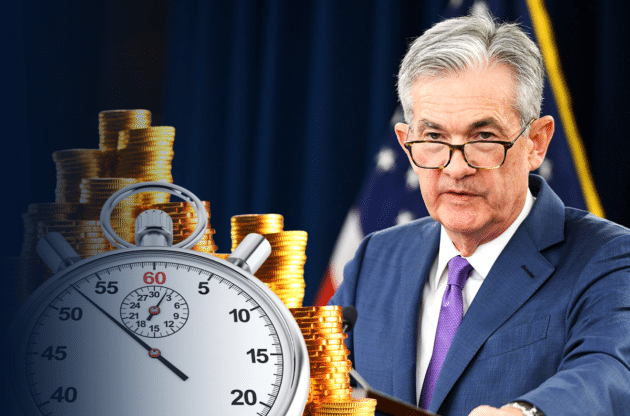Last Sunday, Fed Chief Jerome Powell answered some tough questions on CBS’s 60 minutes.
When asked if the rising national debt is a danger to the economy, Powell responded: “The US federal government’s on an unstainable fiscal path. And that just means the debt is growing faster than the economy. So, it is unsustainable.”
True, and…
Calling the $34 trillion national debt problem “unsustainable” is a massive understatement.
Because US Treasury data shows the national debt has surged another $150 billion since the beginning of the year, and interest payments have now skyrocketed to over $2 billion a day, with no signs of stopping.
But despite the nation’s ballooning debt problem, Powell told 60 Minutes “the economy’s in a good place.”
After all, the Fed’s rate hikes brought inflation down from 9% in 2022 to 3.4% today.
Plus, the latest data released by the Commerce Department’s Bureau of Economic Analysis shows the economy grew at an annual rate of 3.3% in Q4 of 2023.
So, yes, the numbers look promising. But…
Wells Fargo senior global analyst Scott Wren says a primary buoy for the economy in 2023 was the public’s massive holiday spending.
US Bank agrees and says, “In 2023’s fourth quarter, personal consumption expenditures represented nearly 68% of the nation’s GDP.”
But now, Wren cautions, “… as the economy slows as we move through the middle portion of this year and the labor market softens, we continue to believe the holiday spending that occurred last year was a bit of a last hurrah for the consumer.”
In other words, consumer spending is down, debt is soaring, and inflation is still a problem.
Now, if the labor market softens, that massive consumer support base stops spending and the economy contracts…
How will the Fed respond?
History offers clues:
When the funds rate was above 5% in 2008, consumers stopped spending, and the Fed lowered interest rates and started printing money to boost the economy.
During the pandemic, consumers stopped spending…
The Fed lowered interest rates…
And money printing went into overdrive.
This time, inflation swept the nation…
So, the Fed hiked the benchmark interest rate to the highest levels in 22 years.
Now, inflation has cooled, but Powell is pausing rates at 5.5% until further notice.
When will the Fed make cuts?
As you may recall, back in December 2023 Powell indicated cuts might begin in March.
But during his 60 minutes interview, he said Fed officials aren’t ready to make a move until they’ve seen more inflation data:
“The danger of moving too soon is that the job’s not quite done, and that the really good readings we’ve had for the last six months somehow turn out not to be a true indicator of where inflation’s heading,” and “it’s not likely that this committee will reach that level of confidence in time for the March meeting, which is in seven weeks.”
This means cuts might not happen until later in the year.
Meanwhile, Powell’s decision is drawing critical fire from both sides of the aisle:
Democratic Sen. Sherrod Brown, chairman of the Senate Banking Committee, wrote a letter urging Powell to begin cuts, saying, “Restrictive monetary policy is no longer the right tool for combating inflation.”
Powell wants to wait and see.
Former Republican President Donald Trump wonders if Powell’s move is “political” and suggests rate cuts made during the November election could be a deliberate move to boost Democrat campaign performance.
But Powell insists: “We do not consider politics in our decisions. We never do. And we never will.”
Maybe so, maybe so.
The question is…
How will Powell’s pause affect the price of gold?
Again, history offers a clue:
In December 2023—after Powell hinted at March rate cuts—gold prices jumped to a record high of $2,135 per ounce.
Of course, nobody’s certain how gold will respond when the Fed finally pivots.
But if the mere mention of rate cuts triggered a historic gold spike in December…
It’s easy to see why Powell’s pause may have opened an incredible window of opportunity to own gold now before the Fed follows through.
Or call 888-529-0399 to schedule a free consultation with an experienced Gold Specialist. There’s no obligation.
January 18, 2024

